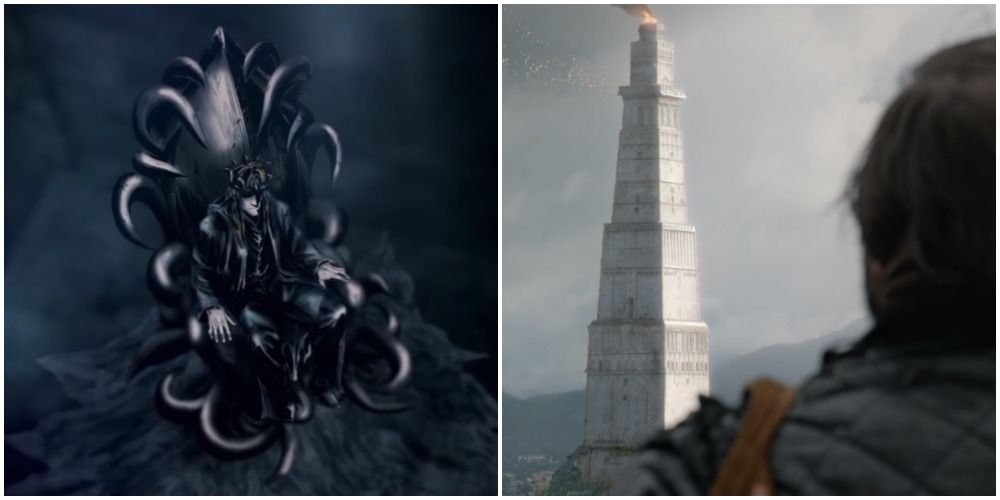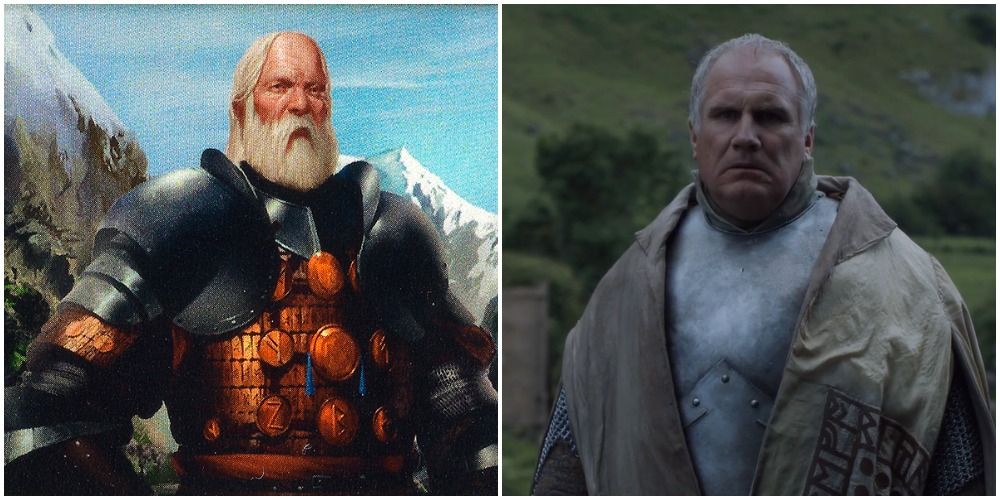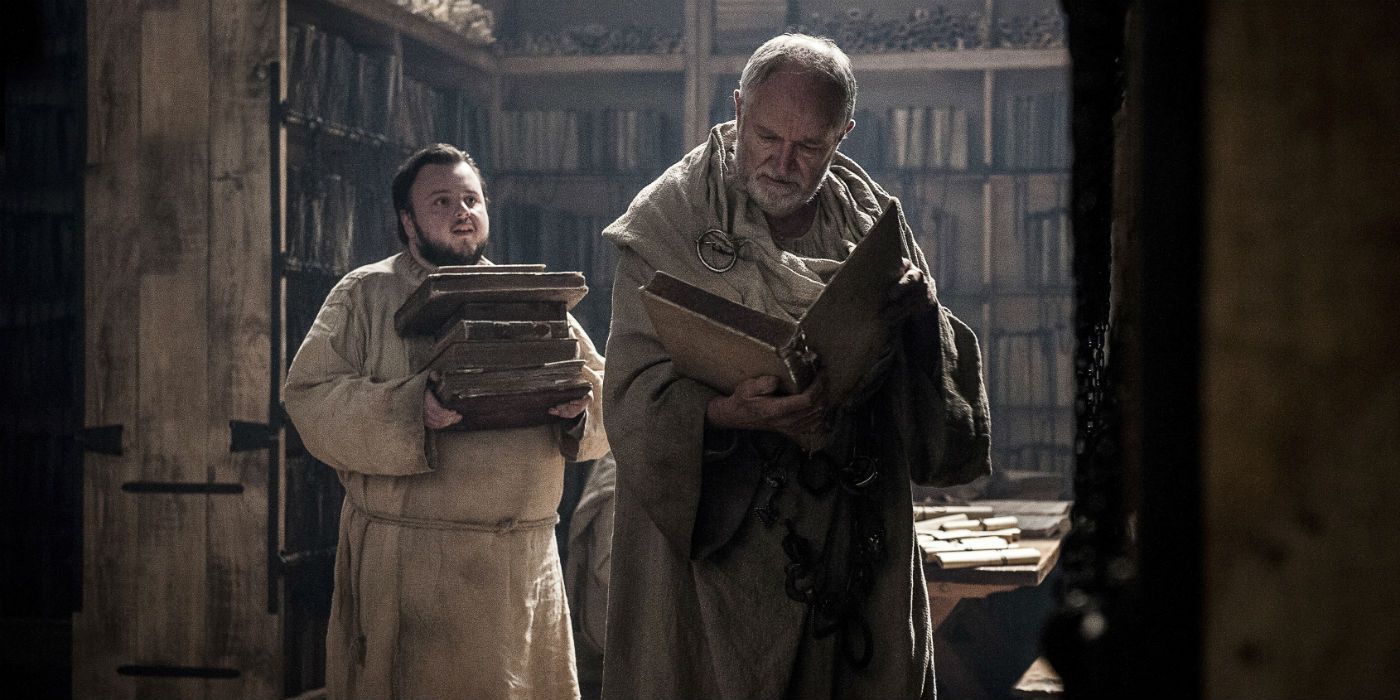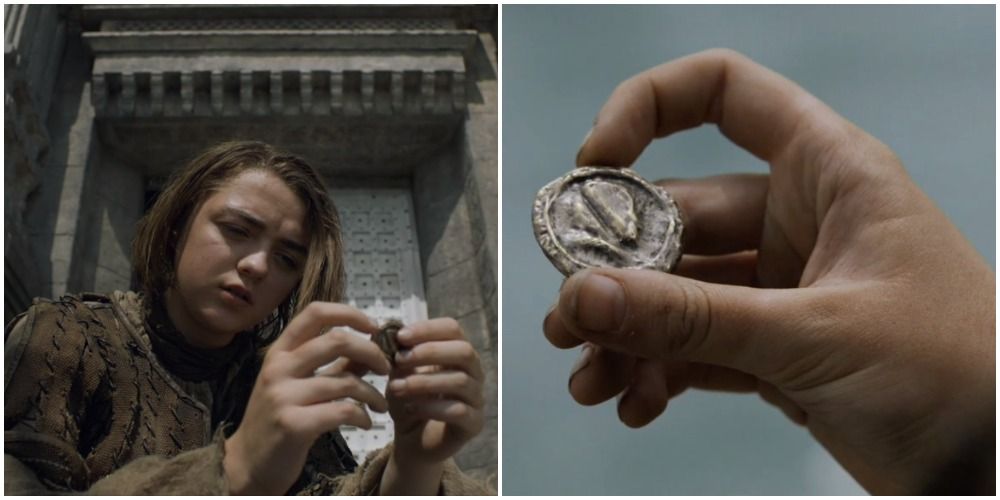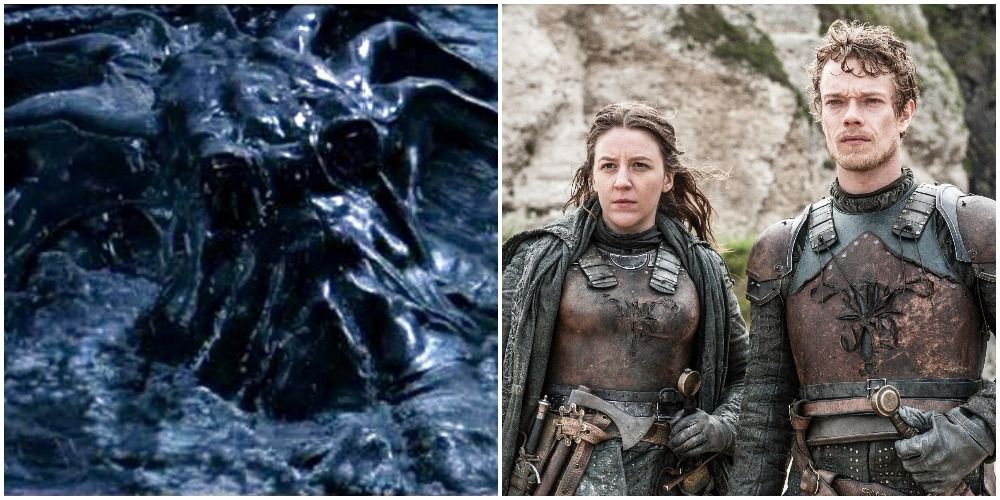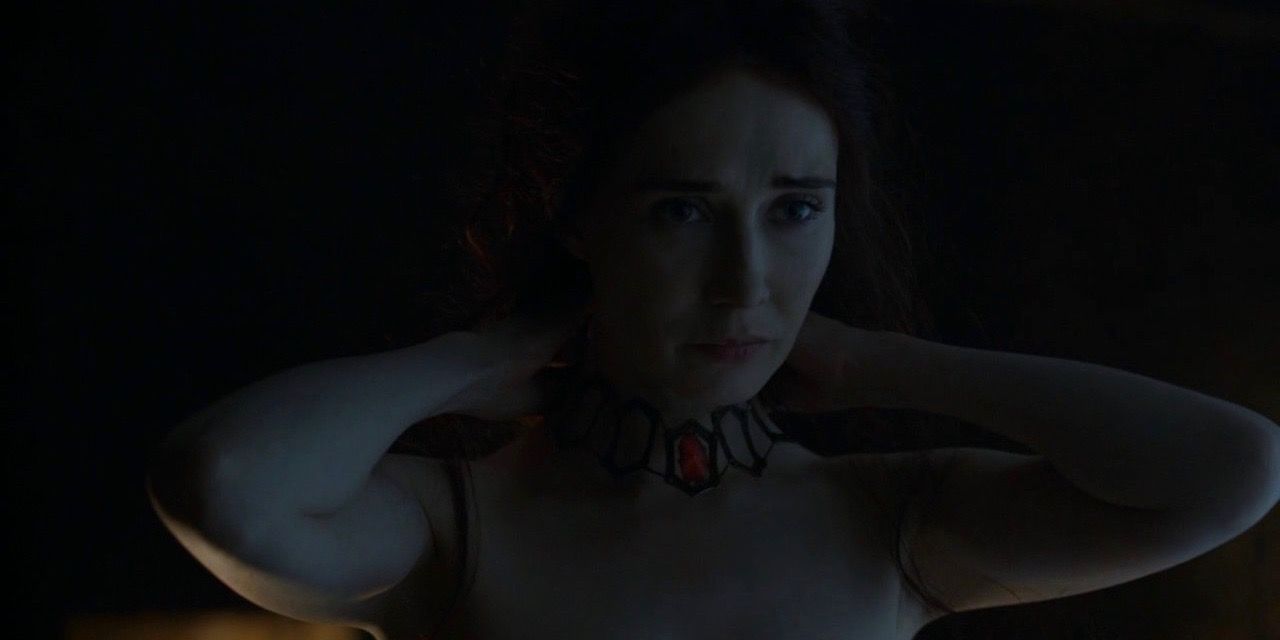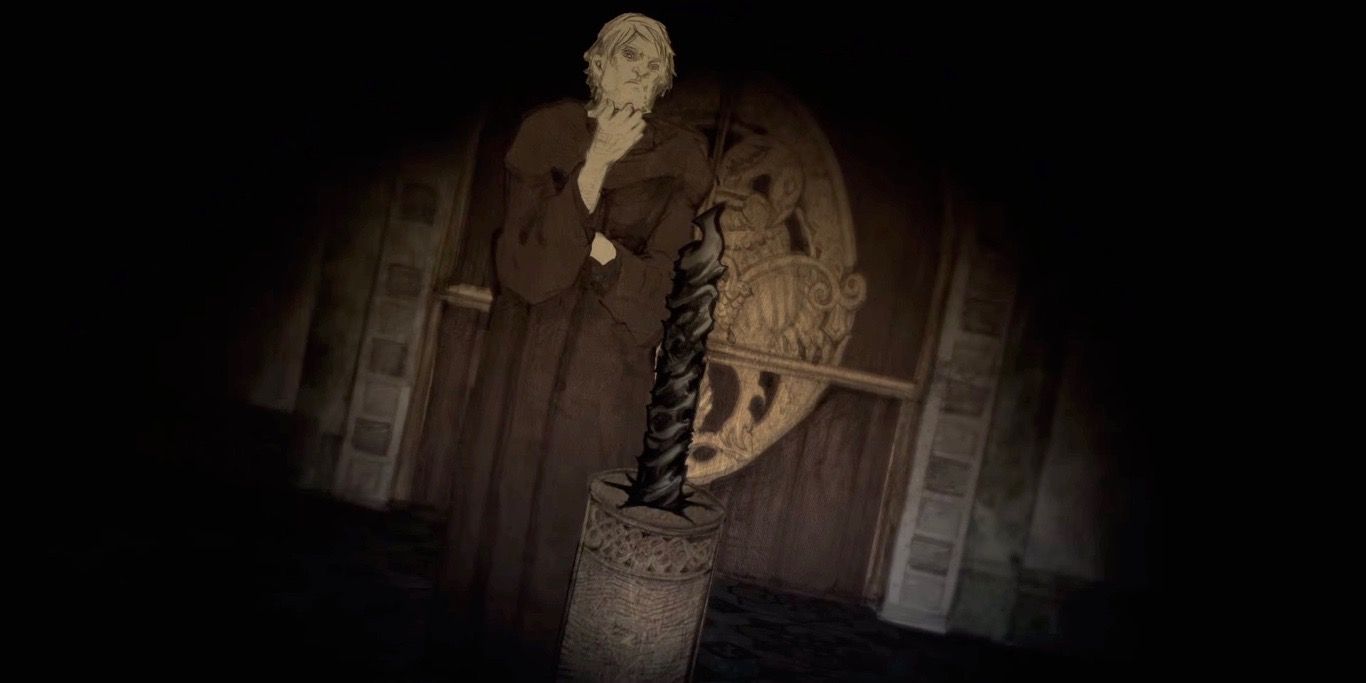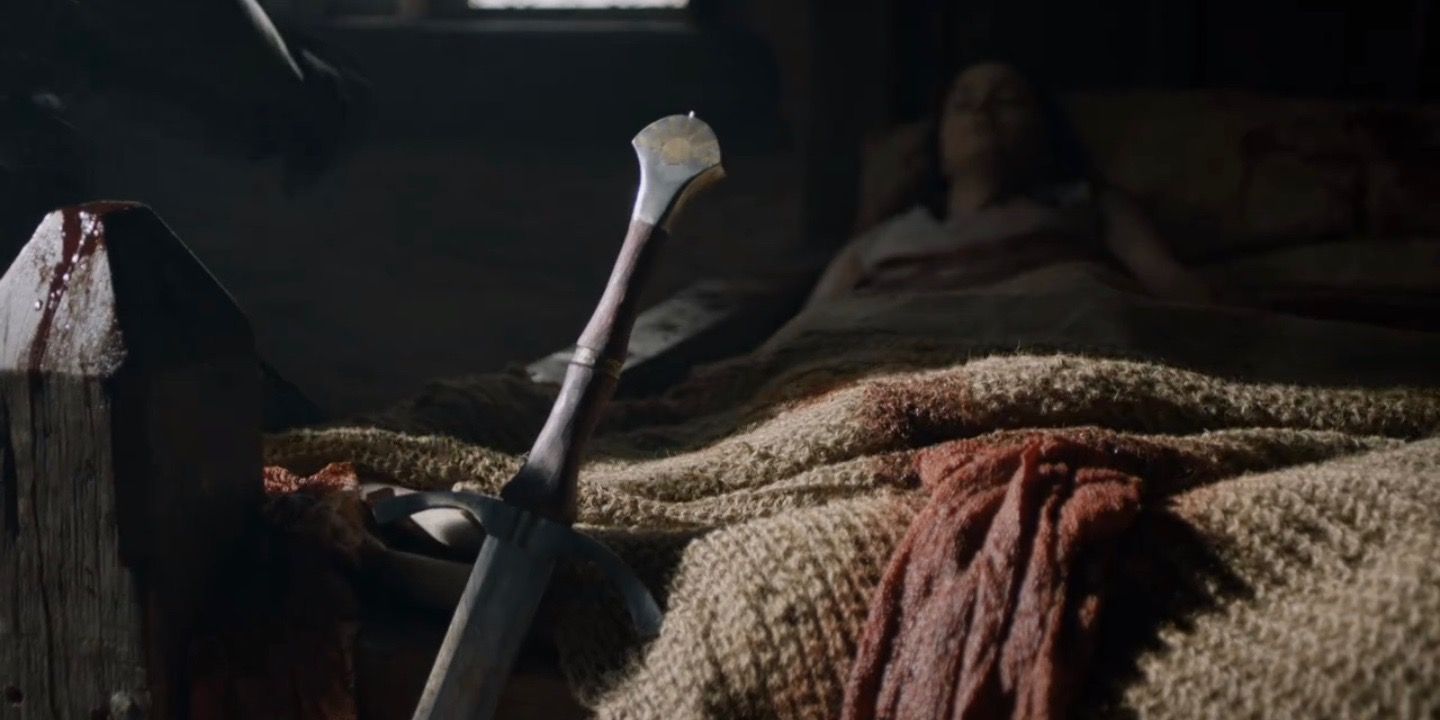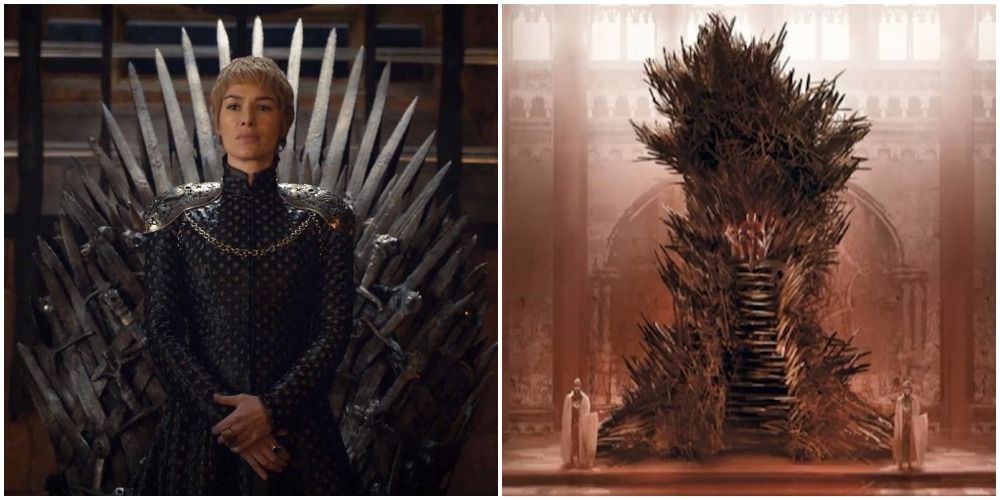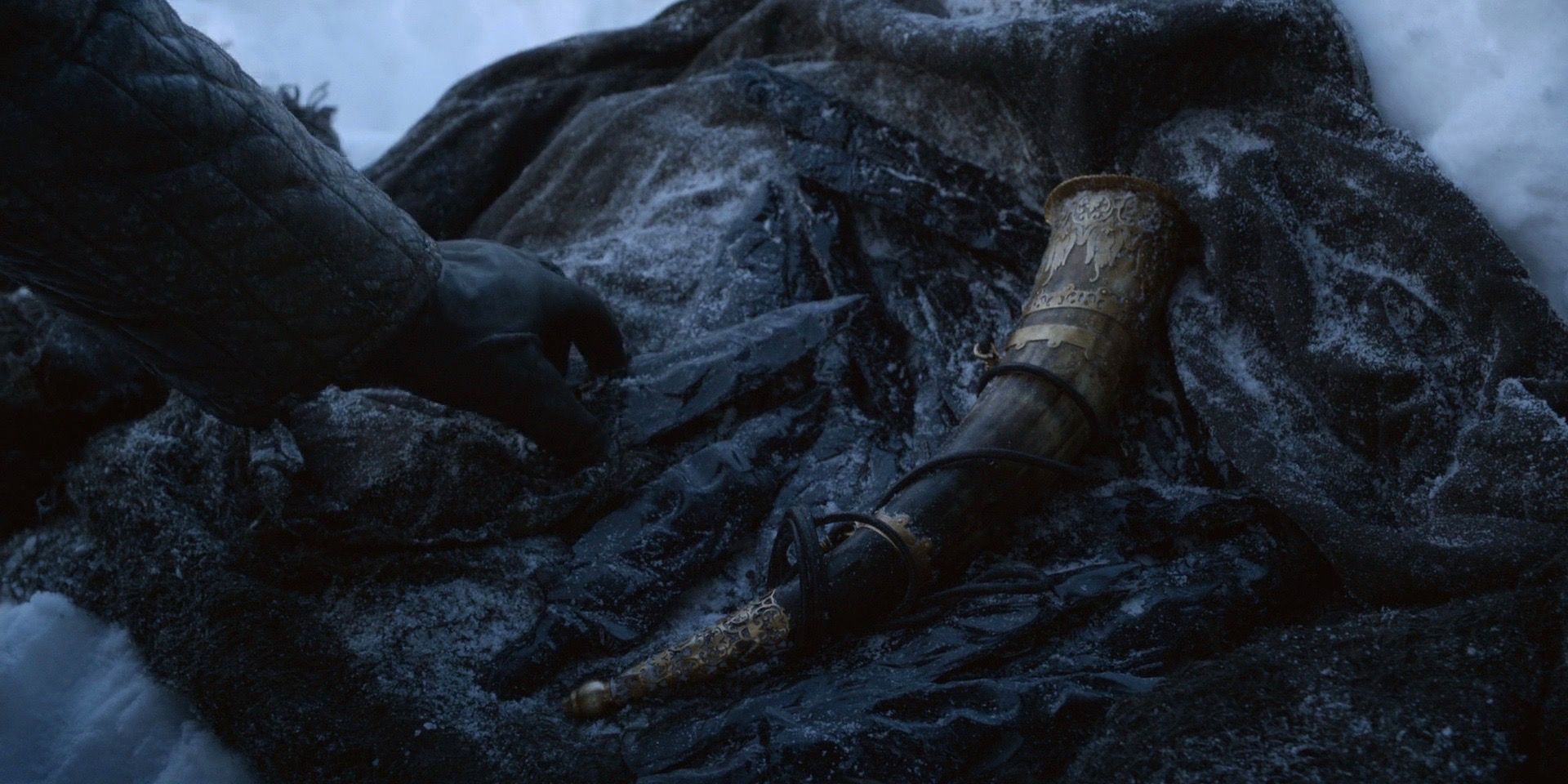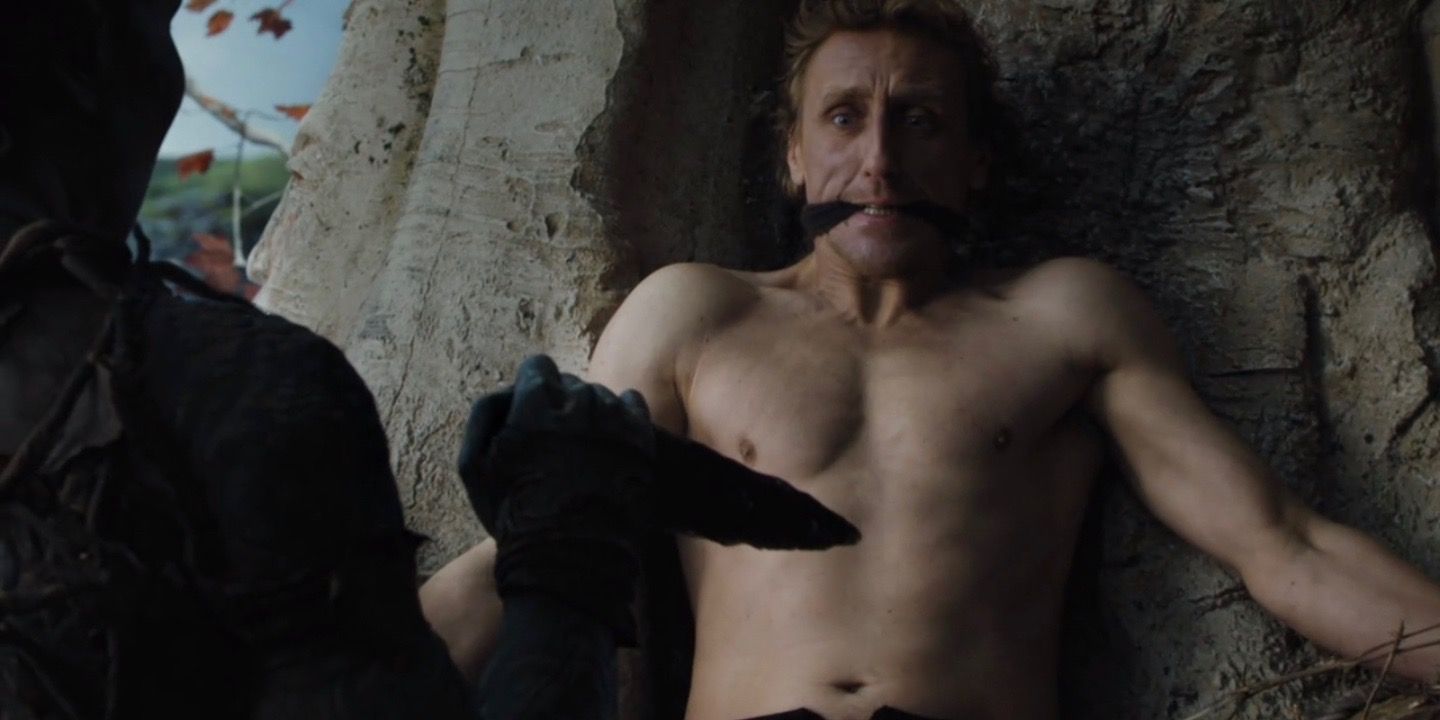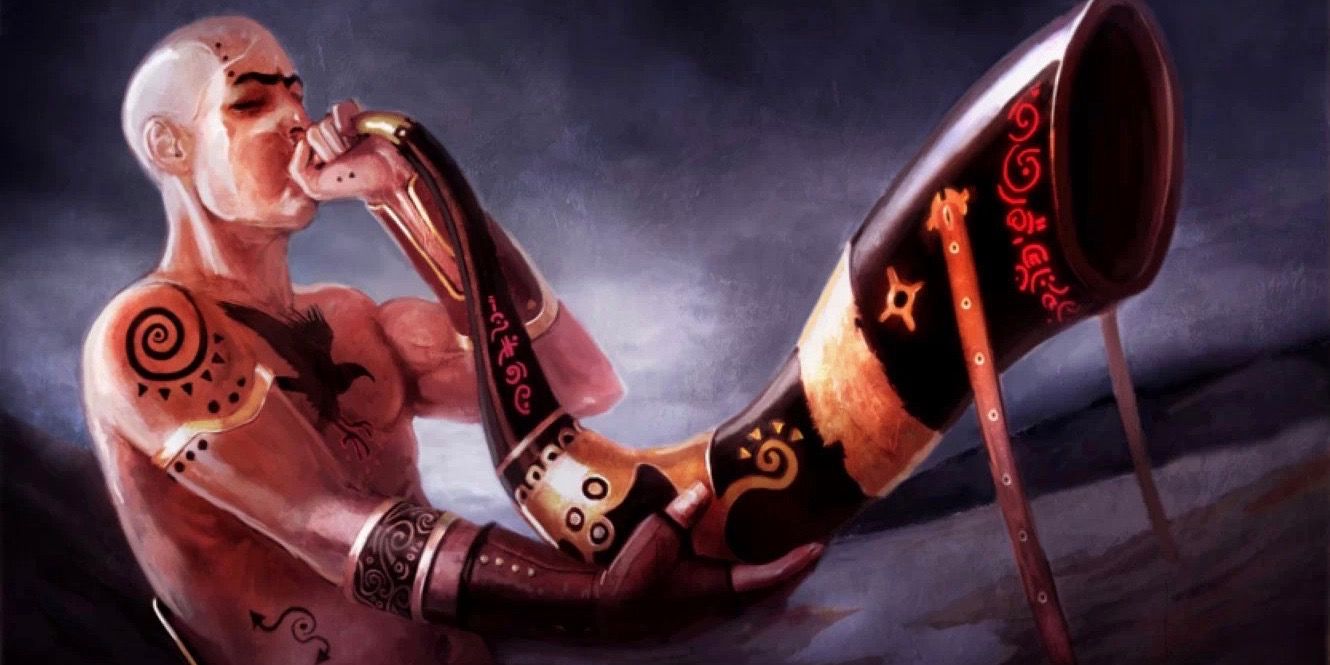While Lord Varys would have us believe that power resides simply where people think it does, in the world of Westeros and Essos, there is an undeniable amount of magic at play. So if you’re looking to survive the Game of Thrones, it certainly wouldn’t hurt to try and get your hands on as many of these mythical artifacts as possible.
George R. R. Martin's epic fantasy series is steeped in thousands of years of history, and an impressive number of ancient relics have survived those times. Many have even remained within their respective houses.
Although the Song of Ice and Fire series isn’t as fond of incorporating magical objects as The Lord of the Rings or Harry Potter, there are still a number of powerful and mysterious items that have and will continue to shape the fate of the world.
For this list, we’ll be taking a look at artifacts that have appeared in both the novels and the HBO series and ranking them based on of their apparent and potential powers. While some of these objects have demonstrated supernatural abilities all of their own, others only exude more symbolic powers or provide their owner with a far greater advantage.
While we wait an entire year for the final season to hit screens, let’s count down the 15 Most Powerful Artifacts In Game Of Thrones, Ranked.
Black Stone Artifacts
If you’ve only watched the TV series, then there’s a good chance that you’ve never heard of the arcane black stone artifacts that are scattered throughout the lands. However, it’s been strongly suggested that these items have been left behind by an unknown third race that inhabited Westeros long before the arrival of the First Men.
The Seastone Chair is probably the most notable black stone artifact, which was discovered on the shores of Old Wyk before being adopted as the throne of the Iron Island. Hightower in Oldtown was also constructed upon a fortress of black stone.
Some maesters have speculated that these artifacts were created by a race of half-human/ half-aquatic creatures that came from the other side of the Sunset Sea. Although these items haven't exhibited any powers yet, they may be the last connection to one of the world's earliest races.
Yohn Royce’s Magic Armor
While Yohn Royce is a bit of a dolt in the TV series, in the novels, he is painted as a seasoned warrior, standing as tall as Sandor Clegane and capable of besting Thoros of Myr during a melee.
Yohn Royce is the Lord of Runestone and he wears a set of bronze armor that is thousands of years old. Sacred runes inscribed upon the armor are said to protect the wearer from any harm, which is why Yohn is rarely seen without it.
House Royce traces its lineage all the way to the First Men, making it fathomable that the armor really was imbued with ancient magic — possibly by the Children of the Forest — which could certainly come in handy during the impending war against the White Walkers.
The Personal Key of Walgrave
While Sam’s time in Oldtown has already come and gone in Game of Thrones, in the novels, the happenings in Oldtown seem like they’re just beginning to get interesting.
Here, Sam is far from the only person of notoriety wandering throughout the Citadel, and there is an entire subplot about a mysterious Alchemist (most likely Jaqen H’ghar) who has recently obtained the personal Key of Archmeaster Walgrave.
This key opens up every locked door in the Citadel, meaning that one of the deadliest assassins in the world may have just gained access to everything that’s worth knowing.
What exactly he intends to do with the key remains to be seen, but as Tyrion has already informed us, the last remaining copy of The Death of Dragons is purportedly locked deep beneath the Citadel, meaning that Dany’s dragons could be in grave danger if this information ever gets out.
Iron Coin of the Faceless Men
At first glance, Arya doesn’t think much of the coin Jaquen H’ghar gives her. It’s made of simple iron and -- as the Faceless Man tells her -- it can’t even be used to buy a horse.
However, when Arya decides that there is little left for her in Westeros, she shows the coin to a captain who is setting sail for Braavos and is quickly granted free passage.
The captain personally escorts Arya all the way to the House of Black and White, which serves as the temple to the Many-Faced God and the base of operations for the Faceless Man.
Though this iron coin may not exhibit any power of its own, being gifted with one is an invitation to train amongst the guild of religious assassins, which has transformed Arya into a covert killing machine.
The Kraken Horn
Along with the happenings in Dorne, the story of the Iron Islands and their connection to the sea is another plot thread that has been given short shrift in the TV series.
In the novels, krakens aren't just used as the sigil of House Greyjoy, they're actual sea creatures who have been said to capsize entire ships.
The existence of a kraken horn has been briefly mentioned in the books, where it is able to summon these monsters up from the deep. However, the horn is said to be in possession of Lord Celtigar on Claw Isle — probably much to the chagrin of the Greyjoys.
If the mythical horn really does exist, there’s little chance that it will make an appearance in the show, though it could certainly still be used to capsize an entire fleet in the novels.
Melisandre’s Ruby
Although Melisandre of Asshai may not always be accurate in her interpretations, the power granted to her by the Lord of Light is undeniable; and her red ruby has certainly played an important role in the magic that surrounds her.
In both the novel and the series, Melisandre wears the large gem upon a tight choker necklace, which is said to glow or pulse, especially when Melisandre is displaying her powers.
In A Clash of Kings, the ruby shimmers when Melisandre drinks wine laced with the Strangler, rendering it ineffective. More notably, the ruby acts as a glamor, concealing Melisandre’s true appearance as a decrepit 400-year-old woman.
While Melisandre has made use of other glamors in the novels, the one she wears around her neck is the only gem that has appeared in the series — making its powers seem that much more significant.
Glass Candles
In the novels, glass candles are extremely rare items that are made out of obsidian, otherwise known as dragonglass. For the past one hundred years they have not burned, but right around the time that Dany’s dragons are born, they are once again able to take light.
Glass candles are tall twisted objects with sharp edges that give off an unnaturally bright light. They originally came out of Valyria, and at the Citadel they have three black candles and one green in their possession.
The powers of the black candles are not fully known, but they are widely believed to allow the user to see across great distances and possibly even communicate with others.
In other words, they are very similar to the seeing stones, or palantir in The Lord of the Rings trilogy, which might have been reason enough to leave them out of the show.
Dawn
Dawn is the ancestral sword of House Dayne which was forged from the heart of a fallen star some ten thousand years ago. This makes Dawn one of the oldest — if not the oldest — swords that still exists in Westeros.
In both the show and the novels, Dawn was last wielded by Ser Arthur Dayne, who was killed defending a pregnant Lyanna Stark at the Tower of Joy.
As the prophecy goes, Azor Ahai is reborn underneath a red star. For many fans, the fact that Dawn is present during Jon Snow’s birth confirmed that he is indeed the Prince that was Promised.
Although the sword hasn't displayed any supernatural powers yet, we doubt the novels will conclude without reintroducing this sword in a very significant role.
The Iron Throne
As Lord Varys tells Tyrion, “Power resides where men believe it resides. It’s a trick. A shadow on the wall. And a very small man can cast a very large shadow.”
This is the case with the Iron Throne — the chair constructed by Aegon the Conqueror which has served as the seat of the Lord of the Seven Kingdoms ever since.
The throne was made out of the swords of Aegon’s surrendered enemies and was reinforced using the breath of his dragon, Balerion the Black Dread.
While there have been plenty of power-hungry and ineffectual rulers to sit atop the Iron Throne following Aegon — including the current Queen Cersei — this hasn’t stopped the citizens of the Seven Kingdoms from accepting them as their monarch, proving just how powerful the symbolism of this artifact truly is.
The Horn of Winter
In both the novels and the TV series, Mance Rayder desperately searches for the Horn of Winter beyond the Wall, employing his Free Folk to pillage the graves of long deceased heroes and kings.
The horn was said to once belong to Joramun, the King-beyond-the-Wall some thousand years ago, who used the horn to wake the giants from the earth.
However, Mance and his followers also believed that the horn might be capable of bringing down the Wall as a last resort, although they were well aware that doing so would also unleash the White Walkers.
While the Night King has breached the wall using his new ice dragon in the show, it’s still possible that the Horn of Winter could play a vital role in the novels by bringing down the entire Wall.
Dragonglass Weapons
As we’ve seen in the last season of Game of Thrones, dragonglass has become one of the most sought-after resources in the North, as it is one of the few materials that is known to kill a White Walker
Despite its name, most maesters believe that dragons have little to do with its creation. Instead, the rock is simply volcanic glass, also known as obsidian.
Legend has it that the Children of the Forest once armed the men of the Night’s Watch with dragonglass weapons to help defeat the White Walkers. Ironically, it was dragonglass that helped create the Walkers in the first place.
The island of Dragonstone is one of the few areas in the world known to be replete with the rock, and Daenerys has since allowed Jon to mine the material for the impending war against the Night King and his army of undead.
Valyrian Steel
We’ve known since season three that dragonglass can kill a White Walker, but we wouldn’t find out until season five that Valyrian steel can do the same - after Jon Snow dispatched a Walker during the Massacre at Hardhome.
While Valyrian steel is far scarcer than dragonglass, it’s also far less fragile — making it the single greatest handheld weapon to use against the White Walkers. Additionally, the blade never requires sharpening and is far lighter than regular steel.
However, the secret to foraging the steel was lost during the Doom of Valyria, meaning there is a finite number of Valyrian steel artifacts in Westeros. As of right now, only a few key players wield Valyrian steel swords, including Jon Snow, Samwell Tarly, Brienne of Tarth, and Jaime Lannister.
The Dragon Horn
In the novels, Euron Greyjoy returns to the Iron Island to claim the Seastone Chair, and he brings with him a six-foot horn known as Dragonbinder. The instrument is made from the horn of a dragon, which is banded in Valyrian steel and inscribed with ancient glyphs.
Euron claims to have discovered it in the ruins of Valyria, and when Cragorn, a member of Euron’s crew, blows into the horn, the listeners feel as though their bones are burning inside of them. In fact, Cragorn later dies from sounding the instrument, which burns his lips and blackens his lungs.
Dragonbinder is said to have the power to control dragons. With the horn currently on its way to Essos in the novels, this instrument may very well be the way Dany (or someone else) seizes control of her dragons.
The White Walker’s Ice Blades
While Valyrian steel can exchange blows with these mythical weapons, we have yet to see any other manmade device that can dole out just as much damage as the White Walker’s ice blades.
For instance, the Night King is able to fell Viserion in a single blow with one of their ice spears, suggesting that the weapons contain an extraordinary amount of supernatural power.
Much like the White Walkers, much is still unknown about their ice blades. However, George R.R. Martin has confirmed that much like Valyrian steel, the ice blades are infused with magic that makes them sharper and stronger than any regular sword. Though, that doesn’t seem to matter much when the ice blades are already able to shatter almost every weapon they come into contact with.
Lightbringer
As the legend goes, Lightbringer was the sword of Azor Ahai — a hero who was called to fight against the darkness that lay over the world.
After two failed attempts, Azor Ahai worked one hundred days and one hundred nights forging his sword, which he tempered by casting it through his wife’s heart, forever incorporating her soul into the steel.
It has long been prophesied that Azor Ahai will be reborn, and that he or she will once again use Lightbringer to save the world.
It’s possible that Lightbringer is a sword we’ve already seen — it could be Dawn or Longclaw, or possibly even Ice if the sword should ever be reforged. It's also possible that Lightbringer isn’t a sword at all, but a metaphor for the hero who rises to lead the world out of darkness.
--
What do you think is the most useful artifact in Game of Thrones? Sound off in the comments!


